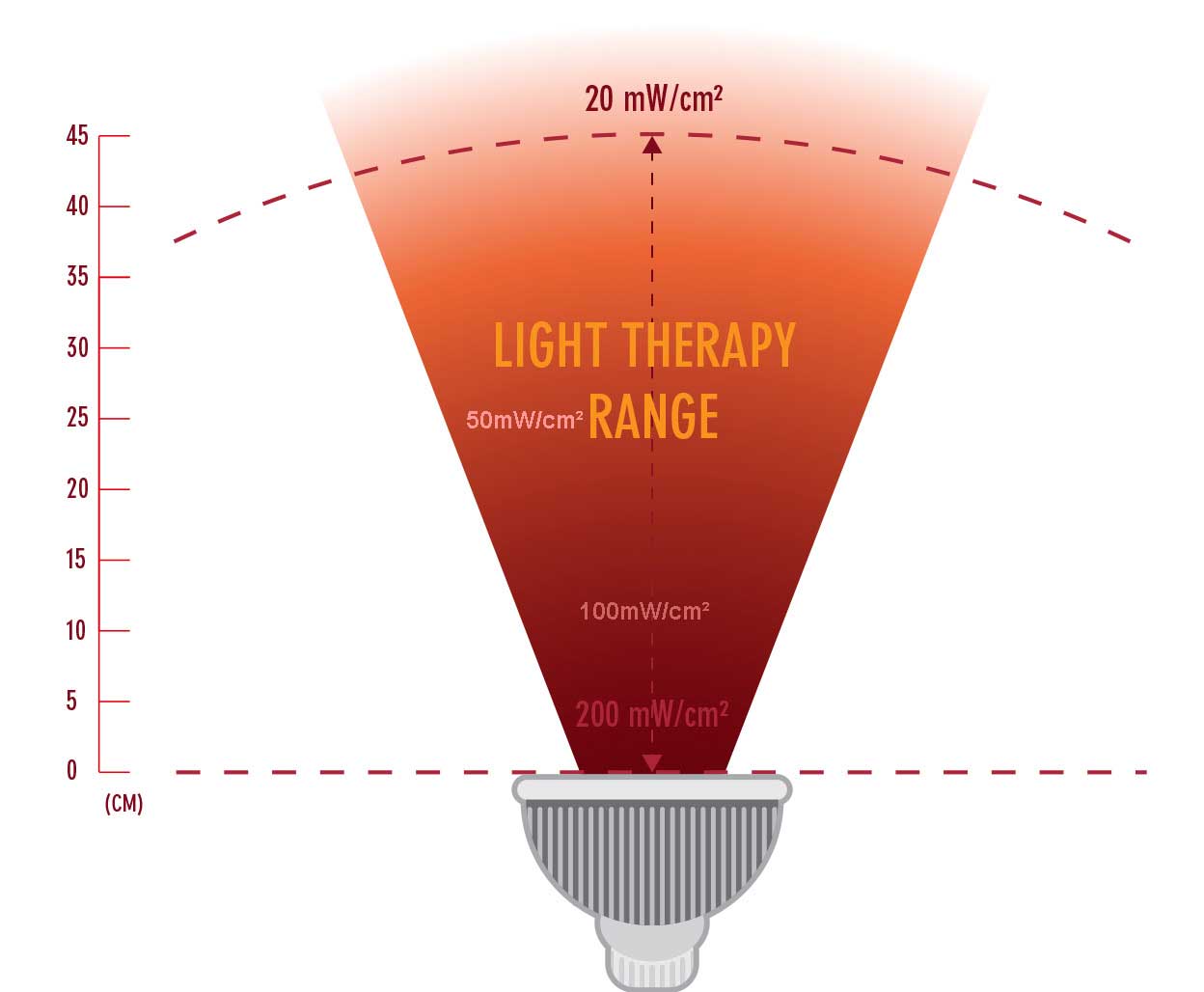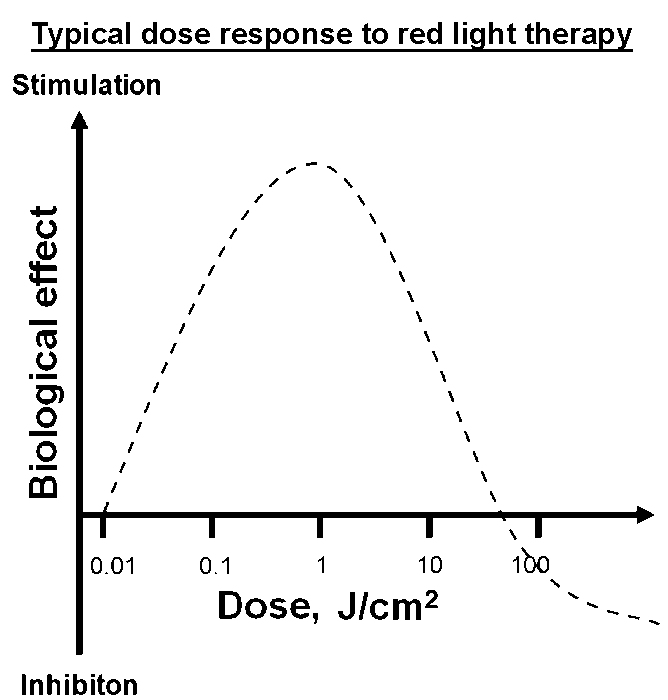What Does Red Light Therapy Do For Your Skin
Light therapy, Photobiomodulation, LLLT, phototherapy, infrared therapy, red low-cal therapy and then on, are different names for similar things – applying light in the 600nm-1000nm range to the body. Many people swear past light therapy from LEDs, while others will use depression level lasers. Whatever the calorie-free source, some people discover tremendous results, while others might not notice much at all.
The most mutual reason for this discrepancy is a lack of noesis about dose. To be successful with light therapy, you first need to know how strong your low-cal is (at different distances), so how long to employ it for.
Contents
What is the strength of my light?
How to calculate dose
More to learn
Summary
References
Medical & Healthcare Disclaimer
The data independent in this article is non intended or implicitly suggested to exist an culling for professional diagnoses, or profesionally recommended treatments & medical advice. Absolutely all of the content, including the article text itself, images, comments and other information, contained on this web page is for not-specific information purposes only. We strongly propose that i should never ignore professional health/medical communication and we strongly suggest that one must non delay seeking a professionally recommended medical treatment because of information attained via reading this article/website. The products sold or recommended on this web site are absolutely not for the diagnosis, prevention, monitoring, treatment or alleviation of whatsoever specific affliction, injury or inability.
How can I know the strength of my light?
The power density of calorie-free from any LED or laser therapy device can exist tested with a 'solar power meter' – a product that is usually sensitive to light in the 400nm – 1100nm range – giving a reading in mW/cm² or W/m² (100W/m² = 10mW/cm²).
Power density? This is a measurement of how concentrated the lite is at a given bespeak (a.chiliad.a. energy density, light power density, etc.). Specifically how many calorie-free photons are passing through a given surface area of space.
With a solar power meter and a ruler, you can measure your light power density by altitude. Beneath are the low-cal ability density readings of three of our products at different distances:
| Infrared light Device | Red Lite Device | Red/IR combo | |
|---|---|---|---|
| Distance (cm) | Ability Density (mw/cm²) | Power Density (mw/cm²) | Ability Density (mw/cm²) |
| 0 | 1200 | 1100 | k |
| 5 | 500 | 450 | 600 |
| 10 | 200 | 180 | 450 |
| 15 | 100 | ninety | 200 |
| 20 | 70 | 65 | 100 |
| 25 | 45 | xl | 85 |
| 30 | 35 | 30 | 70 |
| 35 | 20 | xviii | 55 |
| 40 | 18 | fifteen | 40 |
(Power densities over about 200mw/cm² are not typically indicated for skin handling as they are too powerful, withal they can still be used for brusque periods to target deeper tissue. Power densities in the 500-1000+ range offering excellent penetration, useful for muscles, joints, brain tissue, etc.)
You tin can exam any LED or laser to find out the power density at a given signal. Full spectrum lights such as incandescents & heat lamps cannot be tested this way unfortunately because much of the output is not in the relevant range for calorie-free therapy, so the readings will be inflated. Lasers and LEDs give authentic readings considering they only output wavelengths +/-20 of their stated wavelength. 'Solar' power meters are apparently intended for measuring sunlight, so not perfectly calibrated for measuring single wavelength LED light – the readings will exist a ballpark figure but accurate enough. More accurate (and expensive) LED light meters do exist.
Optimal force range
Once y'all have the readings of your device, you lot can make up one's mind the 'light therapy range' or the distance from which information technology needs to be applied to give an advisable power density. This tends to be in the 10 – 200mW/cm² range. Vary the strength past varying the distance you apply calorie-free from.
Here is the therapy range of our Cherry-red Light Device for example:


How to calculate light therapy dose
Light therapy dose is calculated with this formula:
Power Density 10 Fourth dimension = Dose
Fortunately, nigh recent studies use standardised units to describe their protocol:
- Ability Density in mW/cm² (milliwatts per centimeter squared)
- Time in due south (seconds)
- Dose in J/cm² (Joules per centimeter squared)
For light therapy at home, power density is therefore the main matter you need to know – if yous don't know it, you lot won't be able to know how long to apply your device for to achieve a certain dose. It is simply a measure of how strong the light intensity is (or how many photons are in an area of space).
With angled output LEDs, the light is spreading out as it moves, roofing a wider and wider area. This means relative calorie-free intensity at whatever given bespeak gets weaker as distance from source increases. Differences in beam angles on LEDs as well affects the power density. For example a 3w/10° LED will project light power density further than a 3w/120° LED, which will projection weaker light over a larger area.
Light therapy studies tend to employ ability densities of ~10mW/cm² upwards to a max ~200mW/cm².
Dose is simply telling yous how long that ability density was applied for. Higher low-cal intensity ways less awarding time is required:
5mW/cm² applied for 200 seconds gives 1J/cm².
20mW/cm² applied for fifty seconds gives 1J/cm².
100mW/cm² applied for ten seconds gives 1J/cm².
These units of mW/cm² and seconds give a result in mJ/cm² – just multiply that by 0.001 to make it J/cm ². The full formula, taking into account standard units is therefore:
Dose = Power Density x Fourth dimension x 0.001
What dose should I aim for?
 Now that you tin can summate what dose you are getting, you demand to know what dose is actually constructive. Almost review manufactures and educational fabric tends to claim a dose in the range of 0.1J/cm² to 6J/cm² is optimal for cells, with less doing zip and much more than cancelling out the benefits.
Now that you tin can summate what dose you are getting, you demand to know what dose is actually constructive. Almost review manufactures and educational fabric tends to claim a dose in the range of 0.1J/cm² to 6J/cm² is optimal for cells, with less doing zip and much more than cancelling out the benefits.
However, some studies find positive results in much higher ranges, such equally 20J/cm², 70J/cm², and even as high as 700J/cm². Information technology's possible that a deeper systemic effect is seen at the higher doses, depending on how much free energy is applied in total to the body. Information technology could also be that the higher dose is effective because the light penetrates deeper. Getting a dose of 1J/cm² in the top layer of pare volition only take seconds. Getting a dose of 1J/cm² in deep muscle tissue could take 1000 times as long, requiring 1000J/cm²+ on the skin in a higher place.
Distance of the low-cal source is crucially important here, as it determines the low-cal power density striking the skin. For instance, using the Carmine Light Device at 25cm instead of 10cm would increase the application time required but embrace a larger area of skin. There's nothing incorrect with using information technology from farther abroad, simply be certain to compensate by increasing application fourth dimension.
Calculating how long a session
Now you should know your lite's ability density (varying past altitude) and the dose you lot want. Use the formula below to calculate how many seconds you need to utilize your light for:
Time = Dose ÷ (Power density 10 0.001)
Time in seconds, dose in J/cm² and ability density in mW/cm²
Is there more to lite therapy dosing?
While the information laid out here is adequate to measure dose and summate application time for general use, light therapy dosing is a much more complicated thing, scientifically.
- J/cm² is how everyone measures dose at present, still, the body is three dimensional. Dose can also exist measured in J/cm³, which is how much energy is applied to a volume of cells, rather than just applied the area of skin.
- Is J/cm² (or ³) even a good fashion to measure dose? A i J/cm² dose can be practical to 5cm² of skin, while the same 1 J/cm² dose could be applied to 50cm² of skin. The dose per surface area of skin is the same (1J & 1J) in each case, merely the total energy practical (5J vs 50J) is vastly different, potentially leading to different systemic outcomes.
- Dissimilar strengths of calorie-free can take different effects. Nosotros know that the following strength and time combinations requite the aforementioned total dose, but the results wouldn't necessarily be the same in studies:
- 2mW/cm² 10 500secs = 1J/cm²
- 500mW/cm² x 2secs = 1J/cm²
- Session frequency. How oftentimes should sessions of ideal doses be applied? This may be different for dissimilar issues. Somewhere betwixt 2x per calendar week and 14x per calendar week is shown effective in studies.
Summary
Using the right dose is key to get the most out of light therapy. Higher doses are required to stimulate deeper tissue than for the skin. To calculate dose for yourself, with any device, you need to:
- Figure out your calorie-free'southward power density (in mW/cm²) by measuring it at different distances with a solar power meter.
- If you take one of our products, utilize the table above.
- Calculate dose with the formula: Power Density x Time = Dose
- Expect for dosing protocols (strength, session time, dose, frequency) that have been proven effective in relevant light therapy studies.
- For general use and maintenance, between 1 and 60J/cm² may be appropriate
References
- Is light-emitting diode phototherapy (LED-LLLT) really effective? WS Kim et al. 2011.
- Low-level laser (light) therapy (LLLT) in skin: stimulating, healing, restoring. P Avci et al. 2013 .
- The growth of human being scalp hair mediated past visible reddish lite laser and LED sources in males. RJ Lanzafame. 2013.
- The growth of human being scalp pilus in females using visible red low-cal laser and LED sources. RJ Lanzafame. 2014
- Low-level laser therapy in chronic autoimmune thyroiditis: a pilot study. DB Höfling et al. 2010.
- Depression-level laser in the treatment of patients with hypothyroidism induced past chronic autoimmune thyroiditis: a randomized, placebo-controlled clinical trial. DB Höfling et al. 2013.
- Efficiency of low-level laser therapy in reducing pain induced by orthodontic forces. AA Bicakci. 2012.
- In Vitro event of depression-level laser therapy on typical oral microbial biofilms. FG Basso et al. 2011
- 830 nm calorie-free-emitting diode depression level calorie-free therapy (LED-LLLT) enhances wound healing: a preliminary written report. PK Min et al. 2013.
- Combination blue (415 nm) and red (633 nm) LED phototherapy in the treatment of mild to severe acne vulgaris. DJ Goldberg et al. 2006.
- Psychological benefits 2 and 4 weeks subsequently a single handling with well-nigh infrared light to the forehead: a pilot study of x patients with major low and feet. F Schiffer et al. 2009.
- The issue of low-level laser therapy during orthodontic movement: a preliminary study. Yard Youssef et al. 2008.
- Does Phototherapy Enhance Skeletal Musculus Contractile Part and Postexercise Recovery? A Systematic Review. Borsa et al. 2013.
- Meta-Assay of Hurting Relief Effects by Laser Irradiation on Articulation Areas. Ho Jang et al. 2012.
Source: https://redlightman.com/blog/complete-guide-light-therapy-dosing/
Posted by: smithuntowent1983.blogspot.com


0 Response to "What Does Red Light Therapy Do For Your Skin"
Post a Comment